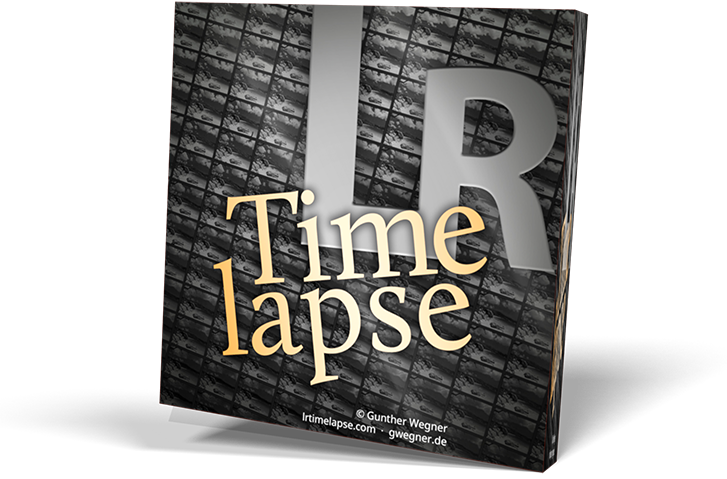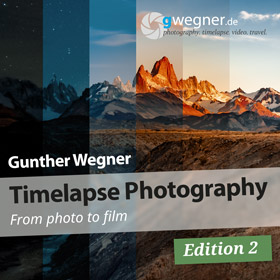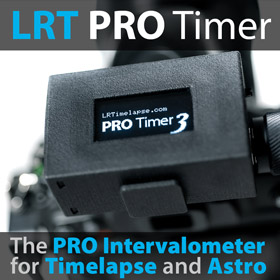Luminance and Black Level
Posts: 11,359
Threads: 197
Joined: Feb 2011
No, the Raw data is not being analyzed at all. The lum an visual_lum are being calculated from the camera previews / visual previews. This makes a lot more sense: deflicker needs to be calculated after the Lightroom developments have been applied. That's why it bases on the visual lum.
Posts: 323
Threads: 25
Joined: Dec 2014
Ok I understand.
The Adobe DNG converter seems to be the problem.
Many Canon cameras change their black level depending on the ISO.
When I load a DNG sequence, I always get a jump when the black level changes.
If I load the same CR3 sequence, the jump does not exist.
Then the DNG converter probably recalculates the preview images and makes this mistake.
The Adobe DNG converter seems to be the problem.
Many Canon cameras change their black level depending on the ISO.
When I load a DNG sequence, I always get a jump when the black level changes.
If I load the same CR3 sequence, the jump does not exist.
Then the DNG converter probably recalculates the preview images and makes this mistake.
Posts: 11,359
Threads: 197
Joined: Feb 2011
That's possible. I can only repeat what I always say: don't convert your Raw files to DNG. Work on the original Raw file, it will be much faster and save you from additional difficulties.
Posts: 11,359
Threads: 197
Joined: Feb 2011
You should update to the latest Lightroom Classic. Version 6 is outdated (it's from 2015!) doesn't support modern cameras and is slow as hell. Saving here means saving at the wrong place. Just my 2 cents.
Posts: 323
Threads: 25
Joined: Dec 2014
Quote:Version 6 is outdated (it's from 2015!)The last update 6.14 is from the end of 2017, so almost 2018. Except for one camera, my cameras are all older... no reason to update...
But independent of an update…
I was not aware that the preview image is also recalculated when converting CR3 to DNG. I guess the DNG converter uses the same algorithm as in Lightroom Classic. So why shouldn't this also happen in Lightroom Classic?
If Lightroom Classic does that too, then it would even be good if LRT would take the preview image from the DNG. Then LRT could even compensate for that.
The error isn't very big, it's not really relevant for normal photography. But you can already see that in the timelapse video.
I'll have to ask a colleague to export the CR3 from Lightroom Classic...
Posts: 323
Threads: 25
Joined: Dec 2014
I have now let the CR3 be exported to JPG with ACR.
The JPG from ACR shows the same jump at black level change as the previews in the DNG.
The preview images in CR3 or exported JPG from Canon DPP do not show this.
So it seems to be an Adobe ACR problem. Adobe is probably not so clear with the black level change. Admittedly, the differences are not great, but you can see the jump in time lapse.
The black level change at different ISO affects all Canon mirrorless ones that I know.
Not in this case…
So it seems advisable to use Canon's DNG's instead of the CR3. Then LRT uses the preview images from the DNG and compensates for this jump.
.
.
The JPG from ACR shows the same jump at black level change as the previews in the DNG.
The preview images in CR3 or exported JPG from Canon DPP do not show this.
So it seems to be an Adobe ACR problem. Adobe is probably not so clear with the black level change. Admittedly, the differences are not great, but you can see the jump in time lapse.
The black level change at different ISO affects all Canon mirrorless ones that I know.
Quote: I can only repeat what I always say: don't convert your Raw files to DNG. Work on the original Raw file, it will be much faster and save you from additional difficulties.
Not in this case…
So it seems advisable to use Canon's DNG's instead of the CR3. Then LRT uses the preview images from the DNG and compensates for this jump.
.
.
Posts: 11,359
Threads: 197
Joined: Feb 2011
Sorry, I find it very confusing to follow you.
Certainly Adobe's engine has some issues and sometimes introduces effects like Contrast Flicker, as I explained in my Expert Tips Tutorial #5: https://lrtimelapse.com/tutorial/expert
But this is what we have to deal with, regardless of if we are using original raw files or dng. The latest versions of ACR, DNG Converter and Lightroom Classic all use the same ACR develop engine.
LRTimelapse uses the DNG converter to create the visual previews, but this doesn't mean that you should convert the files to DNG.
Converting to DNG has some disadvantages, like slower performance (embedded XMP etc.) and it's an additional step - I don't recommend it although it wouldn't change the end results.
So stay with the original Raw files, learn about the limitations in the tools and use the latest version of the tools.
Those are my recommendations.
Certainly Adobe's engine has some issues and sometimes introduces effects like Contrast Flicker, as I explained in my Expert Tips Tutorial #5: https://lrtimelapse.com/tutorial/expert
But this is what we have to deal with, regardless of if we are using original raw files or dng. The latest versions of ACR, DNG Converter and Lightroom Classic all use the same ACR develop engine.
LRTimelapse uses the DNG converter to create the visual previews, but this doesn't mean that you should convert the files to DNG.
Converting to DNG has some disadvantages, like slower performance (embedded XMP etc.) and it's an additional step - I don't recommend it although it wouldn't change the end results.
So stay with the original Raw files, learn about the limitations in the tools and use the latest version of the tools.
Those are my recommendations.
Posts: 323
Threads: 25
Joined: Dec 2014
Quote:Certainly Adobe's engine has some issues and sometimes introduces effects like Contrast Flicker, as I explained in my Expert Tips Tutorial #5: https://lrtimelapse.com/tutorial/expert
I know the video. The difference with the black level: It is always there regardless of the settings.
Quote:The latest versions of ACR, DNG Converter and Lightroom Classic all use the same ACR develop engine.
That's exactly what I saw and described
Quote:The lum an visual_lum are being calculated from the camera previews / visual previews.
Quote:LRTimelapse uses the DNG converter to create the visual previews, but this doesn't mean that you should convert the files to DNG.
That confused me a bit but I think I got it now and then it makes sense.
I once loaded a CR2 sequence of an M100.
I see a straight line because the "Preview Lum" comes from the embedded preview images of the CR2. They come from Canon.
Then the “Visual Lum” are calculated. Now I see the black level jump. In this case a real RAW development takes place with the DNG converter. This calculation then also changes when I change settings. Is it correct that way?





